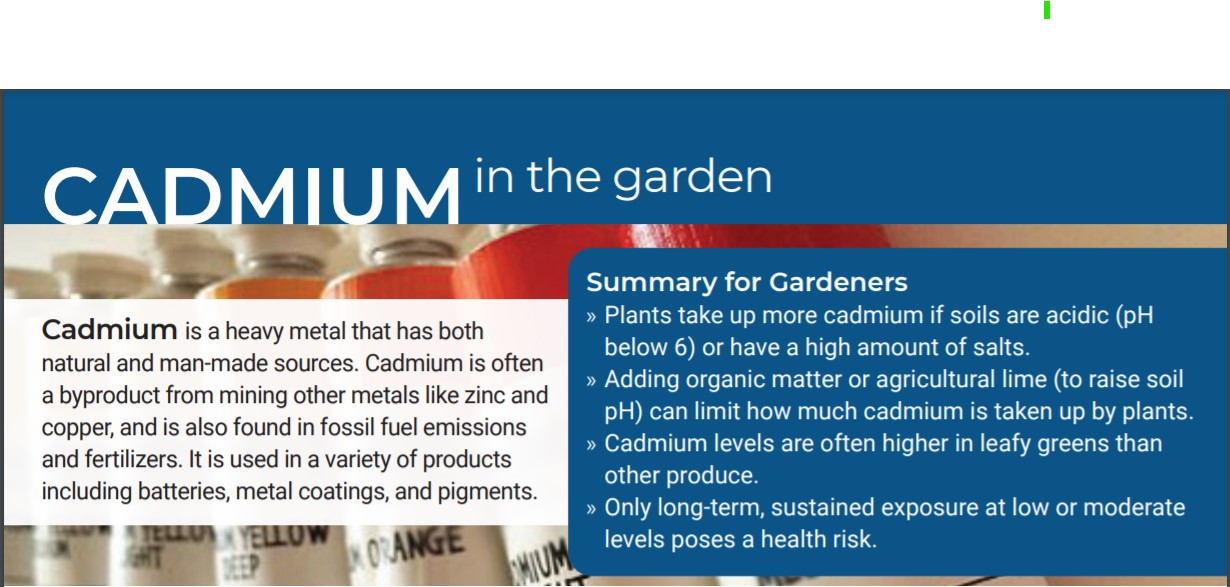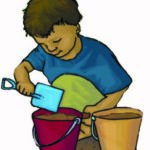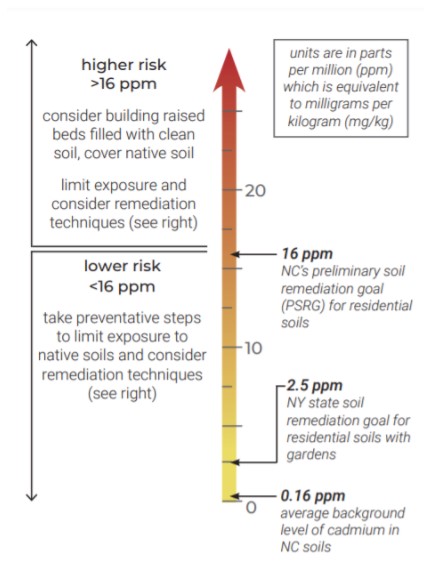Cadmium in the Garden
go.ncsu.edu/readext?826032
en Español / em Português
El inglés es el idioma de control de esta página. En la medida en que haya algún conflicto entre la traducción al inglés y la traducción, el inglés prevalece.
Al hacer clic en el enlace de traducción se activa un servicio de traducción gratuito para convertir la página al español. Al igual que con cualquier traducción por Internet, la conversión no es sensible al contexto y puede que no traduzca el texto en su significado original. NC State Extension no garantiza la exactitud del texto traducido. Por favor, tenga en cuenta que algunas aplicaciones y/o servicios pueden no funcionar como se espera cuando se traducen.
Português
Inglês é o idioma de controle desta página. Na medida que haja algum conflito entre o texto original em Inglês e a tradução, o Inglês prevalece.
Ao clicar no link de tradução, um serviço gratuito de tradução será ativado para converter a página para o Português. Como em qualquer tradução pela internet, a conversão não é sensivel ao contexto e pode não ocorrer a tradução para o significado orginal. O serviço de Extensão da Carolina do Norte (NC State Extension) não garante a exatidão do texto traduzido. Por favor, observe que algumas funções ou serviços podem não funcionar como esperado após a tradução.
English
English is the controlling language of this page. To the extent there is any conflict between the English text and the translation, English controls.
Clicking on the translation link activates a free translation service to convert the page to Spanish. As with any Internet translation, the conversion is not context-sensitive and may not translate the text to its original meaning. NC State Extension does not guarantee the accuracy of the translated text. Please note that some applications and/or services may not function as expected when translated.
Collapse ▲Sources of Cadmium Exposure
Cadmium exposure can occur in and outside the garden. Cadmium is usually found at very low levels in soils, but hotspots from man-made sources may also exist. Below are some of the main sources that release cadmium into the environment.
Once in the environment, we can be exposed in a few different ways (see exposure section to the right).
Exposure to Cadmium in the Garden
How am I exposed? Eating, breathing, or direct skin contact with contaminated soil particles, or eating contaminated produce, can all be routes of exposure.
Are my garden plants safe to eat? Leafy greens tend to have higher concentrations of cadmium, followed by herbs and roots. Fruits have low
cadmium levels. Overall, garden and supermarket produce tend to have similar levels of cadmium.
Should I be worried? Exposure to moderate levels of cadmium in soils or produce poses no immediate health risk, but limiting exposure (especially for children) is still a good idea. It is important to remember that there are many health benefits to
home and community gardening.
Limit children’s exposure
|
Making Sense of Regulatory Standards
No official standards have been established in North Carolina for acceptable levels of cadmium in garden soils. The guidelines and background values below can help you determine whether cadmium levels in your garden soil might require further attention.
Health Impacts of Cadmium
Cadmium is a known human carcinogen (it can cause cancer). Low or moderate levels of cadmium in soil do not pose any immediate risk, but consistent exposures over long periods of time can increase cancer risks.
Eating food or drinking water with very high levels of cadmium can severely irritate the stomach, leading to vomiting and diarrhea (this is uncommon).
Other health effects are still being researched. Animal studies have shown that cadmium can harm development and reproduction, lung function (if inhaled), and lead to kidney disease.
Reduce Cadmium Exposure in the Garden
- Adding compost or other organic matter from a contaminant-free source may help limit cadmium uptake by plants. Check the NC Composting Council website to find STA or OMRI certified compost.
- Adding agricultural lime (to raise soil pH) can also limit plant uptake.
- Thoroughly wash produce grown in cadmium-contaminated soil, to remove any soil or dust.
- If your soil cadmium levels are high, consider not planting leafy greens such as lettuce, spinach, and swiss chard (which take up more cadmium.
- Conduct a soil safety training to teach exposure reduction strategies to all garden users.
- Visit our website below for our factsheet on 10 Healthy Garden Habits.
Testing Resources
 |
Well water testing for cadmium |
 |
How to test your soil and interpret the results |
 |
Email questions about cadmium.soil testing |
Email us at superfund@duke.edu
This factsheet was created by the Duke University Superfund Research Center’s Community Engagement Core with the goal of helping garden managers, Extension agents, Master Gardeners, and home gardeners identify, understand, and manage risks associated with chemical contamination that may be present in garden soils.
This work was supported through the National Institute of Environmental Health Sciences P42 Multiproject Center Grant program, grant number P42ES010356.











